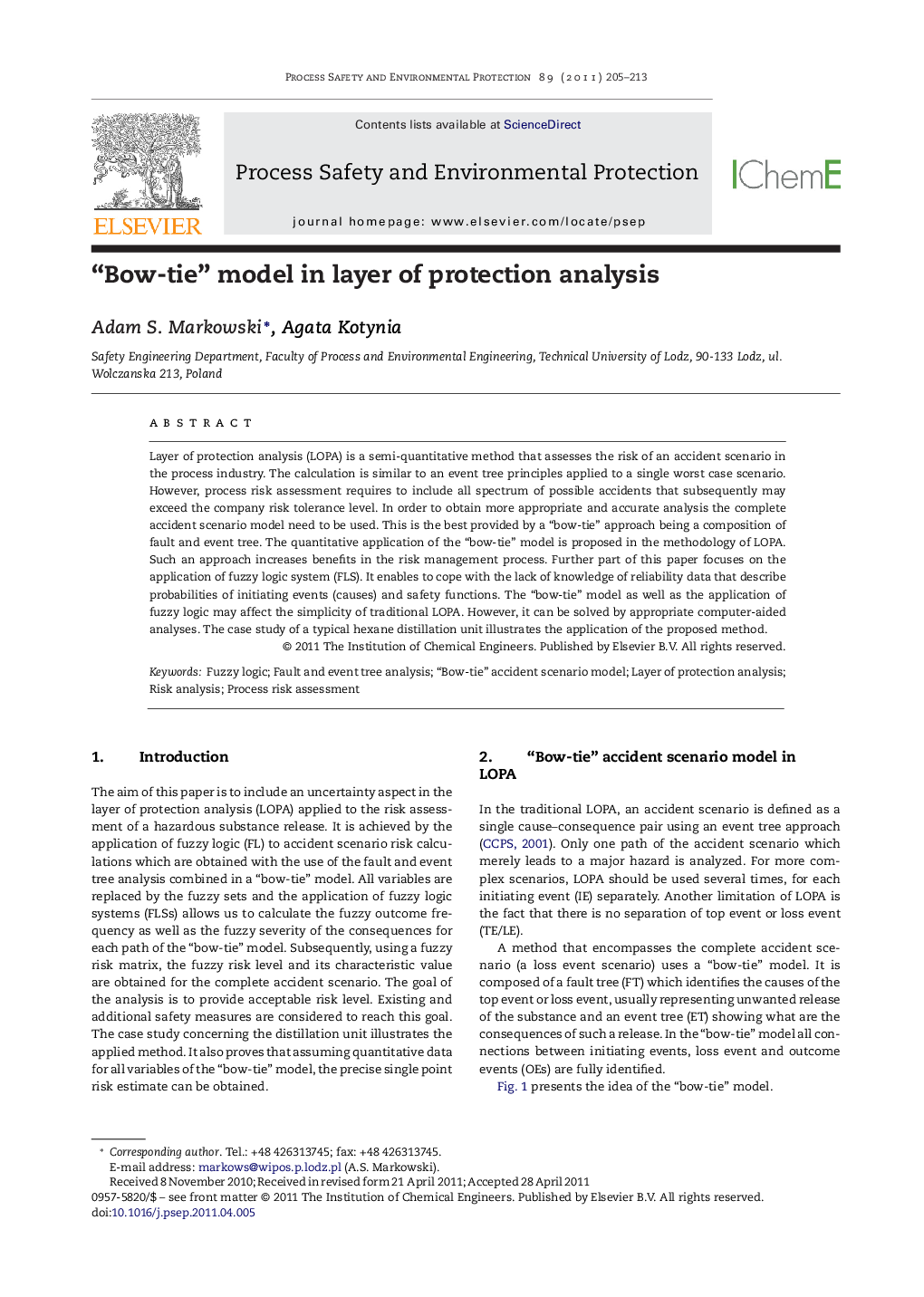| کد مقاله | کد نشریه | سال انتشار | مقاله انگلیسی | نسخه تمام متن |
|---|---|---|---|---|
| 588553 | 878581 | 2011 | 9 صفحه PDF | دانلود رایگان |

Layer of protection analysis (LOPA) is a semi-quantitative method that assesses the risk of an accident scenario in the process industry. The calculation is similar to an event tree principles applied to a single worst case scenario. However, process risk assessment requires to include all spectrum of possible accidents that subsequently may exceed the company risk tolerance level. In order to obtain more appropriate and accurate analysis the complete accident scenario model need to be used. This is the best provided by a “bow-tie” approach being a composition of fault and event tree. The quantitative application of the “bow-tie” model is proposed in the methodology of LOPA. Such an approach increases benefits in the risk management process. Further part of this paper focuses on the application of fuzzy logic system (FLS). It enables to cope with the lack of knowledge of reliability data that describe probabilities of initiating events (causes) and safety functions. The “bow-tie” model as well as the application of fuzzy logic may affect the simplicity of traditional LOPA. However, it can be solved by appropriate computer-aided analyses. The case study of a typical hexane distillation unit illustrates the application of the proposed method.
► The quantitative application of the “bow-tie” model in the methodology of LOPA is proposed.
► Subjective and vague problems connected with frequency data are solved with help of FL.
► This concept allows for precise determination of safety measures for specific accident scenario.
► The practical example illustrates presented approach.
Journal: Process Safety and Environmental Protection - Volume 89, Issue 4, July 2011, Pages 205–213